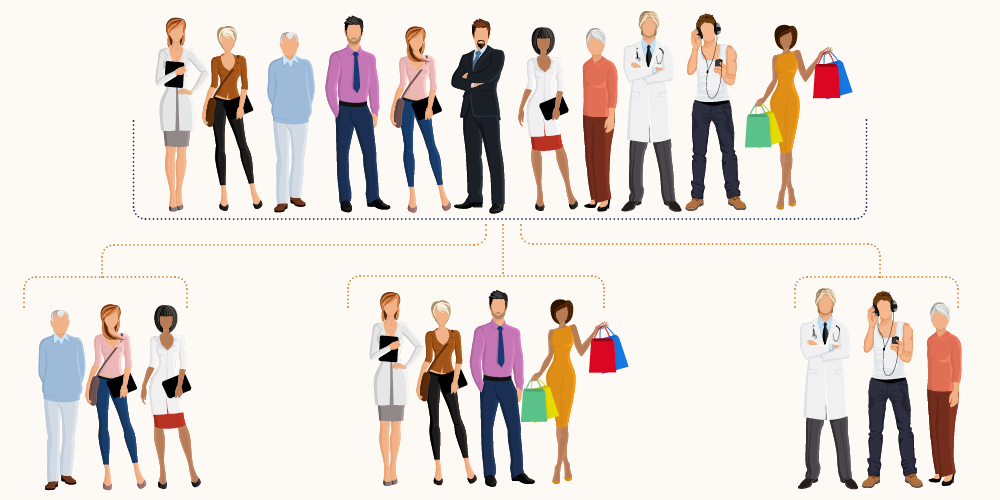From phone calls to direct mail to text messaging, there are seemingly countless ways to engage your nonprofit’s supporters. However, one channel stands out as a strong communication tool for garnering support: email.
Email marketing is crucial for nonprofit organizations, offering a cost-effective way to personally engage with donors and supporters, share the organization’s impact, and increase support through meaningful, direct, and regular communications.
Email templates help ensure consistency across communications, personalize messages, and display clear calls to action—that’s why we’ve laid some out for you in this guide! We’ll review five different touchpoints your nonprofit will have with its supporters, as well as the purpose of the touchpoint and additional tips for success. Review these templates to streamline campaigns and capture donors’ attention, nurturing them to support your organization without constant manual effort.
1. The Welcome Email
The Purpose
A strong welcome email is crucial in establishing your first point of contact with a donor. A lasting first impression has the potential to lead to continued engagement in the future, making it vital to exemplify the organization’s mission and your gratitude for new donors.
Tip for Success
Since welcome emails are your nonprofit’s first interaction with a donor, you won’t have enough information to incorporate high levels of personalization and should instead focus on reaching out briefly and quickly. As CharityEngine’s fundraising software guide points out, email marketing automation tools can help you craft and send messages quickly, making it an advantageous feature for emailing new supporters.
The Template
Subject: Welcome to [Organization Name], We’re So Excited to Have You!
Dear [First Name],
Thank you for your generous support towards our mission! Your donation to [Organization Name] is already making a difference in [Cause the nonprofit supports].
Your donation has contributed to [Specific impact statement, such as “X number of families receiving nutritious meals”].
We are thrilled to have you as part of our community, and we look forward to working together to [Reemphasize the mission your nonprofit supports].
Follow us on [Social media links] to learn more about our organization and ways you can support us.
Thank you for believing in our mission. Together, we are making a difference!
With gratitude,
[Your Name]
[Your Title]
[Organization Name]
2. The Impact Story Email
The Purpose
Sending an impact story email to your donors and contacts can be an engaging and effective way to show donors how their contributions made a difference in your organization’s mission. A combination of key metrics and heartfelt stories will showcase the power of a donor’s contribution to your organization. Ultimately, this will encourage them to continue donating to view the continued value of their actions.
Tip for Success
Remember to position donors as the story’s hero—not your nonprofit. While showcasing your nonprofit’s impact, be careful to highlight donors as the characters who made the story possible.
The Template
Subject: Your Contribution Made a Difference!
Dear [First Name],
Because of your generosity, we are making a difference. We wanted to share your impact on [Name of Beneficiary] – which would not have been possible without your support.
Meet [Beneficiary]:
[Share a brief story of the beneficiary’s challenge before your organization started working with them].
But thanks to your support, [Organization Name] was able to step in.
Because of your kind donation:
-
- [List 2-3 results that have come from donations made to your organization]
You are the reason that stories like [Beneficiary’s Name] exist. Your generosity brings support to those who need it most and fuels hope in the lives of those we work to serve.
Want to continue making a difference? A monthly gift ensures that more of our beneficiaries receive the support they deserve. [Include a link to set up a recurring donation]
From all of us at [Organization Name], we thank you for your support. Together, we can change the world.
With gratitude,
[Your Name]
[Your Title]
[Organization Name]
3. The Urgent Fundraising Appeal
The Purpose
By sending an urgent fundraising appeal email to your donors, your organization will be able to quickly mobilize donations and instill a sense of urgency towards your mission. A time-sensitive campaign can encourage donors to act fast, prompting action as soon as they open the email instead of waiting until another time to do so.
Tip for Success
Be sure to emphasize the importance and necessity of making a time-sensitive donation. Getting Attention’s marketing guide recommends using current events and highlighting your nonprofit’s mission to foster this sense of urgency. Or, you might notify donors of fundraising deadlines, like encouraging them to participate in your year-end giving campaign before it’s too late.
Also, be sure to streamline the process of submitting a donation. As you encourage donors to act quickly and make the donation before they close out of the email, ensure the process is as simple as possible. By tying the time-sensitivity of the donation to a specific event, donors will understand the need to act quickly and prevent lingering on making the donation.
The Template
Subject: We Need Your Help!
Dear [First Name],
Right now, we at [Organization Name] are facing an important challenge, and your support can make all the difference.
[State the time-sensitive event and need for an immediate donation.]
Together, we can change this.
Your donation today can help [Specific impact of donation]. Every contribution, big or small, creates a world of difference and brings us one step closer to meeting this urgent need.
If you are able, please consider donating today using this link. [Insert link for donation]
Thank you for your kindness and all that you do for our community. It’s supporters like you who make a real impact on those we serve!
With gratitude,
[Your Name]
[Your Title]
[Organization Name]
4. The Recurring Donation Request
The Purpose
Statistics show that revenue from monthly giving is on the rise, and 94% of recurring donors prefer to give monthly. In other words, recurring donations—particularly those that occur each month—are a popular way to give. A recurring donation request encourages donors to give on a repeated basis and explains how they can sign up.
Tip for Success
To make your recurring donation request more compelling, segment your donors and tailor your messages according to each group’s preferences, motivations, and interests. For example, an animal shelter might appeal to donors by explaining that monthly donations provide food for the animals in their care and fund adoption events to draw attention to pets in need of a home.
The Template
Subject: Make a Lasting Impact by Joining our Monthly Giving Program!
Hi [First Name],
Your kindness and generosity have already made a difference to [Organization Name], but did you know that by giving monthly, you can create an even greater impact?
When you join [Name of Monthly Giving Program], your donation provides reliable funding that helps us serve our community.
Did you know that a recurring donation of just [$X] a month can:
-
- [State 2-3 bullets of the impact a monthly donation will have on your beneficiaries]
Will you join us?
[Link to Become a Recurring Donor]
Join us today and become a member of the [Name of Monthly Giving Program]! Together, we can create a better future for [Your Beneficiaries]!
With gratitude,
[Your Name]
[Your Title]
[Organization Name]
5. The Thank You Email
The Purpose
The purpose of sending a thank-you email is to strengthen donor relationships and encourage their long-term support. A personalized and heartfelt thank you email is integral to ensuring continued success with those who make your mission possible.
Tip for Success
Show donors your nonprofit recognizes their unique contributions by personalizing your email. This could include:
- Addressing the donor by name
- Mentioning their specific contribution
- Acknowledging their past giving or involvement
Be sure to express sincere gratitude as well, exhibiting warmth and authenticity to ensure the donor feels acknowledged.
The Template
Subject: Thank You – You Made a Difference!
Dear [First Name],
We cannot thank you enough for your generosity and support towards our mission!
Your contribution of [Detail the specific contribution] allowed [Detail the specific impact of the contribution on your beneficiaries].
Your kindness brings hope to those who need it most and does not go unnoticed. We are so grateful to have you as part of our community.
We would love to keep you updated on the impact of your kindness and ways that you can stay engaged with our community in the future! Follow us on [Social media links] to stay involved and see the stories of the people you have helped.
Thank you again for all that you do to support [Organization Name]. Together, we can change the world!
With gratitude,
[Your Name]
[Your Title]
[Organization Name]
Email marketing is a vital form of communication to spread your nonprofit’s mission and encourage your donors to continue contributing. As your organization begins sending a steady stream of emails to your donors, be sure to test and optimize your emails to find the messaging that supporters are most responsive to.
Whether you find that your donors engage the most with longer, more thought-provoking content, or shorter and direct messages, optimize your future emails to stay consistent with what works best, and watch your engagement skyrocket!




